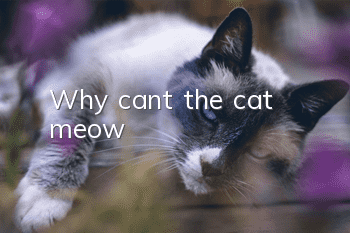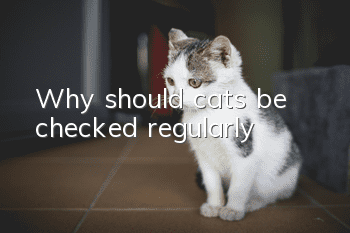Introduction to the genetic disease of Burmese cats: hypertrophic heart disease

In fact, Burmese cats are the same as other animals. They all get sick, and there are some genetic diseases in their bodies. Hypertrophic heart disease is a common genetic disease in Burmese cats. Do you know its causes and symptoms? Let’s learn about it with the editor.
Burmese cat
Introduction to hypertrophic heart disease
Myocardiac hypertrophy (HCM) is the heart's adaptive response to hemodynamic overload. It includes an increase in cardiomyocyte protein synthesis, an increase in volume, and a proliferation of cardiac fibroblasts. In 1979, the name was unified as hypertrophic cardiomyopathy. Regarding hypertrophic heart disease in animals, there have been reports for a long time about posterior aortic embolism, one of the main symptoms of cardiomyopathy in cats. Detailed reports have been made as early as 1930 to 1966. The main lesions are myocardial hypertrophy, the left ventricular chamber becomes smaller, the ventricular wall becomes harder, and the myocardial stretchability is reduced. Therefore, myocardial hypertrophy is more common in cats clinically.
Myocardial hypertrophy is a basic adaptive response of the heart to acute and chronic hemodynamic overload. Phenotypic characteristics of cardiac hypertrophy are determined by intranuclear gene expression patterns. The gene expression patterns induced by different stimuli mainly depend on the signal transduction pathways they initiate. Breeds prone to the disease are cats and small dogs such as Pekingese and Pomeranians.
Cardiac hypertrophy is not a physiological, benign, adaptive compensatory process, but a pathological process that can cause severe damage to cardiac function. The pathogenesis of cardiac remodeling and ventricular hypertrophy is multifaceted, among which local and circulating neuroendocrine factors may play a greater role. Hypertrophic cardiomyopathy is characterized by asymmetric hypertrophy of the ventricular septum, abnormal hypertrophy of myocardial cells, disordered arrangement, and forward movement of the mitral valve during systole. Hypertrophic heart wall compliance decreases, resulting in increased ventricular filling resistance.
Symptoms of hypertrophic heart disease
Cats may not show any symptoms in the early stages. As the disease progresses, they may develop symptoms of heart failure, and/or thromboembolism, sudden death, acute onset of dyspnea and lethargy, anorexia, depression, inactivity, and inactivity. Willing to act. Clinical signs may include any of the following: decreased activity (drowsiness), difficulty breathing (dyspnea), tachypnea (tachypnea), reduced or no appetite (anorexia), vomiting, posture (reluctance to lie down, wide front legs) posture), syncope (fainting) and sudden death. Thromboembolism may cause sudden paralysis of the hind limbs and a constant cry of pain. Typical 5P symptoms: pain or even howling (Pain), paresis (Paresis), pale mucosa (Pallor), paralysis of the hind limbs without pulse (Pulselessness), and fluctuating body temperature(Poikilothermy), or even sudden death due to cardiac rhythm disorder. We don’t want our cat to suddenly become paralyzed or die before we learn about cardiomyopathy.
Cardiomyopathy is a disease that may occur in all cats. It is currently believed that the cause of cardiomyopathy is unknown in most cases. However, some factors such as viral diseases and genetic mutations are suspected to be causative, and it seems to be more common in young and middle-aged male cats. In humans, most hypertrophic cardiomyopathies are caused by genetic mutations; more than 120 different genetic mutations have been identified. Statistical reports show that British shorthair cats, American shorthair cats, exotic shorthair cats, Scottish fold cats, Norwegian forest cats, leopard cats, and Persian cats have genetic tendencies. However, Maine Coon cats and Ragdoll cats have been determined to have a genetic tendency to cause hypertrophy. Mutated genes for cardiomyopathy, and cardiomyopathy can be diagnosed through genetic testing.
Comments
This disease is not detectable at birth and is a disease that gradually evolves. Some cats become sick and die as kittens, but most commonly cats live for many years without any symptoms. If a veterinarian with experience and knowledge in this field, coupled with good equipment, uses ultrasound examination, in most cases, although not necessarily, the disease can be diagnosed when the cat is three years old. , but some sick cats can survive for a long time. Cats that are asymptomatic often die suddenly from a severe cardiac arrhythmia, or are diagnosed with the disease only because of blood clots in their hind legs. Cats may also develop cardiac insufficiency. Although medications can relieve symptoms, they cannot cure it.
- Why does the Ragdoll cat not eat well? Is it a picky eater?
- What does it mean when a cat steps on milk?
- How long does it take for a cat to get used to a new environment?
- Seven tips for bathing cats (suitable for new parents to learn)
- Can pets also get air conditioning disease? You should pay attention to these signs!
- How to treat cat stomatitis at home
- How to choose cat food? When choosing cat food, you should pay attention to these three points
- How to make homemade cat food and things to note when making homemade cat food
- Can cats eat watermelon? What are the advantages and disadvantages?
- Why do Ragdoll cats like to bite people? How to prevent Ragdoll cats from biting people?



